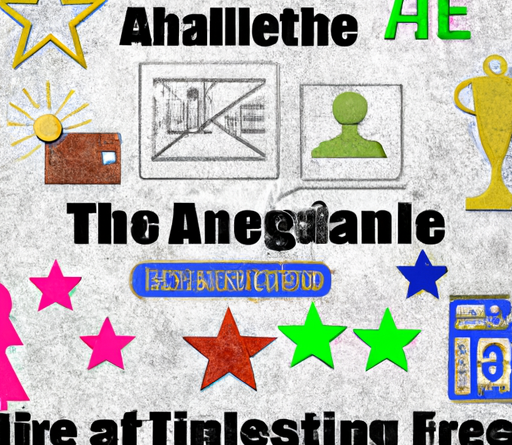
In this article, you’ll learn about the benefits of using a bridge page in affiliate marketing. A bridge page is a powerful tool that can enhance your marketing strategies and help increase your conversions. We’ll discuss how a bridge page can help establish trust with your audience, improve the customer journey, and provide a seamless transition from your marketing message to the affiliate offer. By the end of this article, you’ll have a clear understanding of why using a bridge page can revolutionize your affiliate marketing efforts. Affiliate marketing has become a popular way for individuals and businesses to earn passive income. By promoting and selling products or services from other companies, affiliates can earn a commission for each sale made through their unique affiliate link. While this can be a lucrative venture, it is important for affiliates to find effective ways to promote their affiliate offers and increase their conversion rates. One powerful tool that can help achieve this is a bridge page.
What is a Bridge Page
Definition of a Bridge Page
A bridge page, also known as a pre-sale page or a landing page, is a web page that acts as a bridge between the traffic you generate and the offer you are promoting as an affiliate marketer. Instead of directly sending your traffic to the affiliate offer’s sales page, a bridge page is used to pre-sell the product or service and warm up your audience before they are exposed to the offer.
Purpose of a Bridge Page
The main purpose of a bridge page is to provide value to your audience and build trust before presenting them with the affiliate offer. It allows you to give your audience detailed information, answer their questions, address their concerns, and establish yourself as a credible source of information. By doing so, you increase the chances of converting your traffic into actual sales.
Benefits of Using a Bridge Page
Increased Conversion Rates
One of the significant benefits of using a bridge page in affiliate marketing is the potential for increased conversion rates. By providing valuable content and addressing your audience’s needs, you are positioning yourself as a trusted authority. This enables you to create a stronger connection with your audience, making them more likely to follow your recommendations and take action, leading to higher conversion rates.
Improved User Experience
Another advantage of utilizing a bridge page is the improved user experience it offers. Rather than sending your audience directly to the affiliate offer’s sales page, which may appear salesy and impersonal, a bridge page allows you to create a customized experience. You can tailor the content, design, and layout of the page to align with your brand and the expectations of your audience, providing a more personalized and engaging user experience.
Building Trust and Credibility
Building trust and credibility are crucial elements in successful affiliate marketing. By using a bridge page, you have an opportunity to establish yourself as a reliable source of information. By providing valuable content, addressing concerns, and highlighting the benefits of the affiliate offer, you can build trust with your audience. This trust translates into increased credibility, making it more likely that your audience will follow your recommendations and make a purchase.
How a Bridge Page Works
Pre-selling Products
One of the primary functions of a bridge page is to pre-sell the affiliate product or service. This means providing your audience with relevant and valuable information that showcases the benefits and advantages of the offer. The goal is to create excitement and interest, generating a desire for the product or service before the audience even reaches the affiliate offer’s sales page.
Redirecting Traffic
Instead of sending your traffic directly to the affiliate offer, a bridge page acts as a middleman. It allows you to control the flow of traffic and guide your audience through the sales process. You can strategically place call-to-action buttons, links, and forms on the bridge page to lead your audience to the affiliate offer when they are ready to make a purchase.
Capture Lead Information
In addition to pre-selling the affiliate offer, a bridge page can also be used to capture lead information. By including a lead capture form on the page, you can collect the contact details of your visitors, such as their name and email address. This enables you to build a list of potential customers whom you can continue to market to in the future, even if they don’t make an immediate purchase.
Types of Bridge Pages
Review Bridge Page
A review bridge page provides an in-depth review of the affiliate offer, highlighting its features, benefits, and any drawbacks. It often includes personal experiences or testimonials to add credibility. This type of bridge page is effective for products or services that may require more information and reassurance before making a purchase.
Comparison Bridge Page
A comparison bridge page compares the affiliate offer with similar products or services in the market. It highlights the unique selling points of the offer and explains why it is the superior choice. This type of bridge page is effective for products or services that have competitors and may require a comparison to differentiate and justify their value.
Storytelling Bridge Page
A storytelling bridge page uses stories or scenarios to connect with the audience emotionally. It shares relatable experiences or case studies that resonate with the audience and demonstrate how the affiliate offer can solve their problems or meet their needs. This type of bridge page is effective for products or services that have a strong emotional appeal or a significant impact on people’s lives.
Designing an Effective Bridge Page
Attention-Grabbing Headlines
The headline of your bridge page plays a crucial role in capturing your audience’s attention and enticing them to continue reading. It should be clear, concise, and captivating. Use powerful words or phrases that highlight the benefits and create curiosity. Additionally, consider using a subheadline that provides a brief summary or hook to further engage your audience.
Compelling and Relevant Content
The content on your bridge page should be informative, compelling, and relevant to your audience’s needs. Focus on addressing their pain points, providing valuable insights, and showcasing how the affiliate offer can solve their problems. Use a combination of text, images, videos, or infographics to make the content more engaging and visually appealing.
Clear Call-to-Action
A clear and compelling call-to-action (CTA) is essential for guiding your audience towards the desired action, whether it’s making a purchase, subscribing to a newsletter, or downloading a free resource. Place the CTA prominently on the bridge page, using contrasting colors and a persuasive copy. Make it easy for your audience to take the next step by minimizing distractions and providing a straightforward path to conversion.
Best Practices for Bridge Page Optimization
Mobile-Friendly Design
With the increasing use of mobile devices, it is crucial to ensure that your bridge page is mobile-friendly. Optimize the design, layout, and functionality to provide a seamless and enjoyable experience for mobile users. Test your bridge page on various devices and screen sizes to ensure it displays correctly and is easy to navigate.
Fast Loading Speed
Page loading speed is a critical factor in user experience and conversion rates. A slow-loading bridge page can frustrate your audience and lead to higher bounce rates. Optimize your page by compressing images, minimizing the use of external scripts, and leveraging browser caching. Regularly test the loading speed of your bridge page and make necessary adjustments to improve performance.
Optimized SEO Elements
While bridge pages are primarily used for pre-selling and conversion, they can also benefit from search engine optimization (SEO). Incorporate relevant keywords in your page titles, headings, and content to improve visibility in search engine results. Optimize meta tags, alt tags, and URL structures for better indexing and ranking. However, remember to prioritize the user experience and provide value rather than stuffing keywords unnaturally.
Common Mistakes to Avoid with Bridge Pages
Overwhelming with Information
While it is crucial to provide valuable content on your bridge page, it is equally important not to overwhelm your audience with excessive information. Keep the content concise, focused, and easy to digest. Use bullet points, headings, and subheadings to break down the information into manageable sections. Remember that the goal is to pre-sell, not provide a comprehensive product manual.
Lack of Personalization
Personalization is key to connecting with your audience and building trust. Avoid using generic or cookie-cutter templates for your bridge page. Customize the design, content, and messaging to align with your brand and the preferences of your audience. Showcasing a personal touch and demonstrating that you understand your audience’s needs can significantly enhance the effectiveness of your bridge page.
Ignoring A/B Testing
A/B testing is a valuable practice for optimizing your bridge page and improving conversion rates. Test different versions of your page by making slight variations in headlines, content, CTAs, or design elements. Track and analyze the performance metrics, such as click-through rates and conversion rates, to identify which version yields the best results. Use the insights gained from A/B testing to refine and enhance your bridge page continuously.
Case Studies: Successful Examples of Bridge Pages
Case Study 1: XYZ Company
The XYZ Company implemented a review bridge page for their affiliate offer, which was a high-end fitness equipment. The bridge page provided detailed information about the equipment’s features, benefits, and user reviews. It included personal experiences of the XYZ Company’s fitness trainers, showcasing the equipment’s effectiveness and ease of use. The bridge page also offered a limited-time discount code exclusive to their audience. As a result, the conversion rate increased by 25% compared to direct linking to the affiliate offer’s sales page.
Case Study 2: ABC Company
ABC Company used a storytelling bridge page to promote a skincare product. The bridge page shared the story of a woman who struggled with skin issues and how the skincare product transformed her complexion. It included before-and-after photos, testimonials, and a step-by-step skincare routine. The bridge page integrated a lead capture form, offering a free skincare guide in exchange for the visitor’s email address. The conversion rate for the skincare product increased by 30% after implementing the bridge page.
Legal and Ethical Considerations for Bridge Pages
Ensuring Compliance with FTC Guidelines
When using bridge pages in affiliate marketing, it is crucial to comply with the Federal Trade Commission (FTC) guidelines. Disclose your affiliate relationship and any compensation you may receive for promoting the affiliate offer. Use clear and conspicuous language to ensure your audience understands the nature of your relationship with the affiliate offer’s provider. Failure to comply with FTC guidelines can result in legal consequences and damage to your credibility.
Transparent Affiliate Disclosures
Transparency is essential when promoting affiliate offers through bridge pages. Clearly disclose that the page contains affiliate links and that you may earn a commission for any purchases made through those links. Place the disclosure conspicuously, preferably near the call-to-action buttons or affiliate links. This transparency helps maintain trust with your audience and ensures compliance with legal requirements.
Conclusion
In the ever-growing world of affiliate marketing, utilizing a bridge page can significantly enhance your chances of success. By pre-selling the affiliate offer, redirecting traffic, and capturing lead information, a bridge page allows you to build trust, increase conversion rates, and improve user experience. By following best practices, avoiding common mistakes, and incorporating ethical considerations, you can create effective and engaging bridge pages that drive results. Remember, effective bridge pages are not only beneficial for affiliate marketers but also for the audience, providing valuable information and personalized experiences that help them make informed purchasing decisions. So, next time you promote an affiliate offer, consider using a bridge page to maximize your conversions and elevate your affiliate marketing game.









